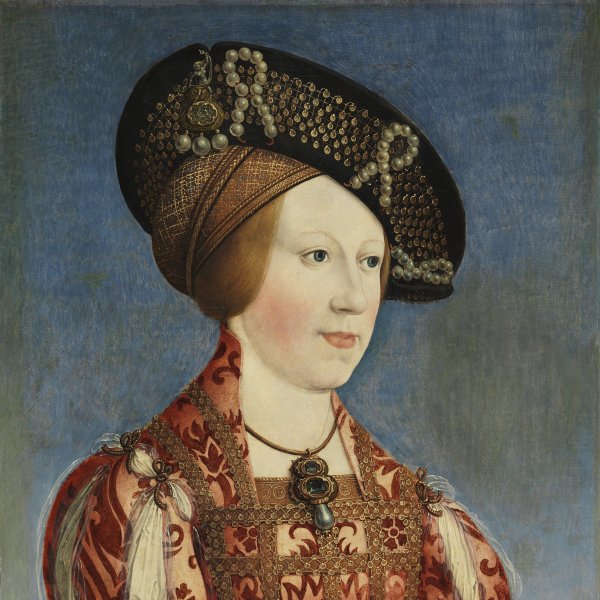Hans Maler
Ulm, ca. 1480-Schwaz (?), 1526/29
The inscription “Hans Maler von Olm Maler zvo Schwaz” found on the reverse of the Portrait of Anton Fugger of 1524 (formerly Prince Thun- Hohenstein collection) allowed for an identification of the initials “HM MZS” that appear on Portrait of a young Man of 1523 in the collection of the Duke of Sutherland. This discovery indicated that Hans Maler was born in Ulm in southern Germany but that between 1523 and 1524 he was in Schwaz in the Tyrol. It is thought that Maler trained in his native city, which was an important artistic centre of the day, with Bartholomäus Zeitblom or an artist of his circle. His style reveals the clear influence of Bernhard Strigel, suggesting that Maler worked as an assistant in Strigel’s workshop in Memmingen before moving permanently to Schwaz around 1515. His first known work is the Portrait of Sebastian Andorfer, dated 1517 (The Metropolitan Museum of Art, New York).
Between 1519 and 1526 Maler’s principal clients were the Archduke Ferdinand, whose court was based in Innsbruck, the Fugger, a leading family of bankers and merchants in Augsburg, and members of the patrician classes in Schwaz. Maler’s portraits conform to the type of court portrait developed by Strigel, with the sitter depicted three-quarter length. The hands are concealed and the figure is located against a graduated blue background that shades to a lighter tone at the bottom. The modelling of his sitters’ features is both delicate and pleasing. Maler also painted religious compositions but it has been more difficult to attribute these works with any certainty. The presence of the initials “HM” on a Holy Family in Sigmaringen has led to an attribution to the artist, while according to Stange (1956) the style of this work suggests an early date in his career.
Between 1519 and 1526 Maler’s principal clients were the Archduke Ferdinand, whose court was based in Innsbruck, the Fugger, a leading family of bankers and merchants in Augsburg, and members of the patrician classes in Schwaz. Maler’s portraits conform to the type of court portrait developed by Strigel, with the sitter depicted three-quarter length. The hands are concealed and the figure is located against a graduated blue background that shades to a lighter tone at the bottom. The modelling of his sitters’ features is both delicate and pleasing. Maler also painted religious compositions but it has been more difficult to attribute these works with any certainty. The presence of the initials “HM” on a Holy Family in Sigmaringen has led to an attribution to the artist, while according to Stange (1956) the style of this work suggests an early date in his career.





